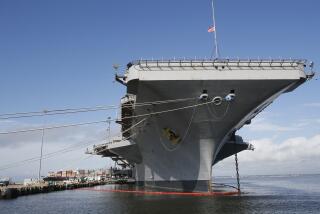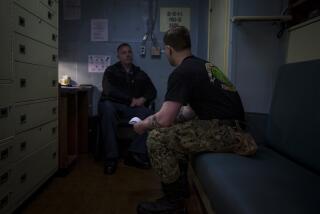The Navy Gives Itself a Face Lift : But Practice of Free Cosmetic Surgery Could Disfigure the Service’s Image
- Share via
Almost no one enters military service for the pay or perks. Even many officer salaries are modest when compared to civilian pay. Housing and food allowances are low. Despite discounts at exchanges and other base facilities, military life is rarely described as plush.
There is one fringe benefit that has attracted some notice recently: the free cosmetic surgery offered at four U.S. Navy hospitals to active-duty personnel, their dependents and retired members of the military.
In 1988, the latest year for which national figures are available, the 11 Navy surgeons at hospitals in San Diego, Oakland, Bethesda, Md. and Portsmouth, Va., performed 131 breast augmentations, 158 face lifts, 167 liposuctions and one hair transplant--procedures that can cost as much as $6,000 each in the civilian world. The 30 Army and Air Force plastic surgeons also performed these so-called “aesthetic operations.”
While such procedures represent a small portion of all military plastic surgeries performed and are treated as a low priority, they are nevertheless a misdirection of public funds. Despite the benefits for both doctor and patient, they are difficult to justify. Although popular--100 people a month seek cosmetic work in San Diego alone--such surgery has to be considered non-essential. And in light of the Navy’s reputation for past excess--remember the $630 ashtray?--they are probably ill-advised.
A number of health-maintenance organizations refuse to pick up the tab for the same kinds of elective surgery for civilians. The Veterans Administration has issued regulations prohibiting them. At the very least, military patients should be required to pay the bill for elective cosmetic surgery, just as their civilian counterparts must.
The Navy notes that the surgery gives its physicians peacetime practice with some of the skills they would use in combat surgery situations. It is true that techniques for handling tissue and gauging incisions are used to tuck tummies as well as repair battlefield injuries; wartime facial surgery, like nose jobs, can require carving bone to clear an air passage.
Critics argue that Navy surgeons’ time would be better spent reconstructing the mangled limbs of, for example, Afghan refugees. Or, closer to home, San Diego’s Navy plastic surgeons could spend more time offering essential reconstructive surgery to indigents in Tijuana. Current Navy cosmetic-surgery practice surely isn’t the greatest scandal since Watergate. But it does make this proud service look bad.
More to Read
Sign up for Essential California
The most important California stories and recommendations in your inbox every morning.
You may occasionally receive promotional content from the Los Angeles Times.













